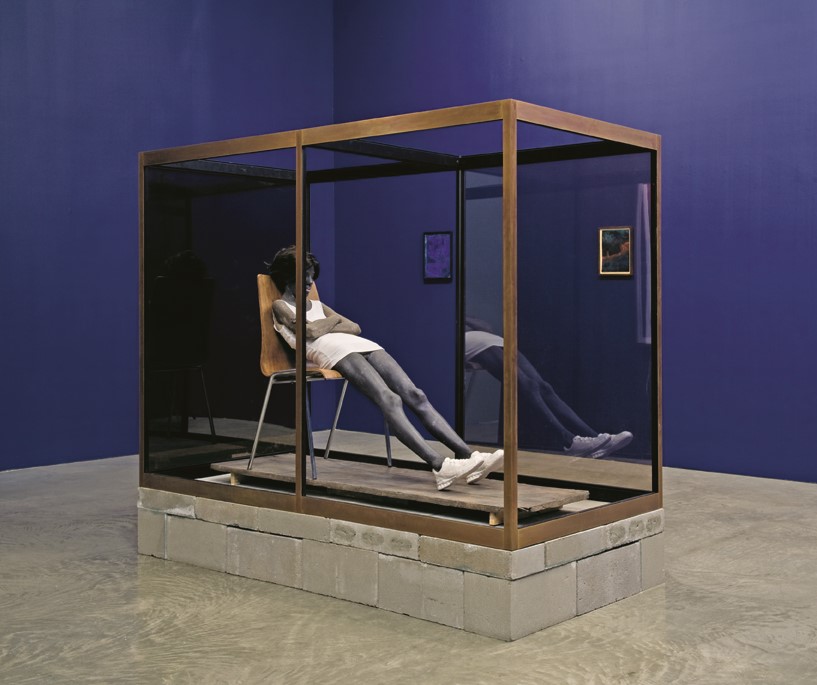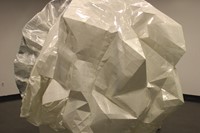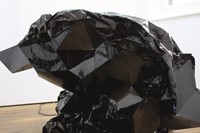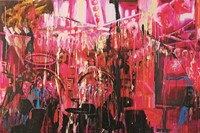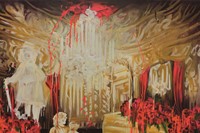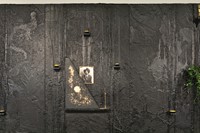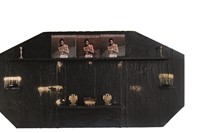100 New Artists provides a fascinating reference for art fanatics, novices and those in between, pointing towards new directions in contemporary art: “a class year book of the graduating generation,” Gavin explains...
London-based writer and curator Francesca Gavin has been a purveyor of fresh and new art talent throughout her career. From her roles as contributing editor at AnOther, visual arts editor at Dazed & Confused and Twin magazine, and curator of numerous worldwide exhibitions, Gavin continuously showcases and platforms up-and-coming creatives. Also on the panel for the Converse/Dazed Emerging Artists Award – the shortlist of which is announced today – this week Gavin’s latest book 100 New Artists launches. Bringing together an innovative new generation of artists who are defining our aesthetic future – Gavin’s book consists of 100 artists all under the age of 35, from disparate locations, working in a variety of mediums. Instead of forcing her view and interpretation of each artist’s work onto the reader, Gavin conducted interviews with each individual artist, giving them the chance to explain their work in their own words. With the current economical climate and fast development of technology, the landscape in which today’s artists are working is very different to that of only a few decades ago. In that notion this book provides a fascinating reference for art fanatics, novices and those in between, pointing towards new directions in contemporary art: “a class year book of the graduating generation,” Gavin explains.
Here we speak to Gavin about about art today and how she went about selection the final 100 artists.
Can you explain the quote on the front of the book: “Despite moments of clarity, there is no ‘ism’ in this book"?
It comes from the introduction to the book. My argument is grouping artists together in easy, journalist-friendly terms does not work. It’s an insult to the breadth of thought in art. Arguably rather than isms or collective terms like YBAs, contemporary art is all about individual voices and a lack of collective identity.
How did you go about selecting this final 100 artists and how much of a challenge was this?
I spent a good three months scouring international art fairs, visiting galleries, searching the internet for artists in specific countries. But really I have spent the past decade looking at art constantly. I discover new people every day and this is the result.
What criteria did you follow, if any?
It is always a challenge to define the ‘new’. There were no more than ten artists from any one country. I felt that internationalism was vital. I made sure I kept the full breadth of mediums. I didn't want an entire book of sculptors or painters, for example. All the artists have done interviews with me in the book and it consists of 100 Q&As. I think that focus on the artists voice (rather than the critics) says a lot about how people are looking at art today. Lastly all the artists are under the age of 35. When I was researching it felt to be a watershed age between success and the fight to get seen.
How do you think the rise of new media and social networking has changed the landscape of art?
Completely. In the past few years there has been a huge rise of artists personal websites, online exhibition spaces and art blogs. Artists are creating completely new audiences, getting seen by curators around the world. Oliver Laric and Jayson Musson (aka Hennesey Youngman) are perfect examples of artists whose careers are exploding because of the Internet. I also think that facebook, blogs and personal websites encourage the idea of presenting yourself to the world. It does not necessarily mean the results are any less interesting or valid if there is a desire to get your work seen.
How do you think the current economical climate have affected artists and their practice? Do you think it has had a negative impact on art?
In terms of content I think there is a lot less ‘big’ art around than there was. The loud brashness of big guns like Koons or Hirst feels out of tune. In the past few years there has definitely been a move away from the shock-joke approach of the 1990s. Aside from an interest in technology, I think there’s a lot more subtlety and attention to craft perhaps than before. Something about that intimacy is a result of economics. People were making the work before but it makes more sense now. Outside of that, I think the economic climate has made it increasingly difficult for artists to function – people still have to eat.
As a whole what do you think 100 New Artists says about art today?
Many things – and hopefully none of them are didactic. That there is a huge breadth of mediums in contemporary art. That artists are still successfully questioning social constructs and the fabric of being. That there is still skill and talent and thought in emerging names. That art does not have to be just interesting to three people within their own academic, elitist world but can have relevance to everyone.
What do you think makes a successful, intriguing and inspirational artist?
It is always going to be an instinctive decision – and thank God for that. We can’t all fancy the same person and we shouldn’t all like the same artist? Personally I like artists that reference things that have meaning for me. The strange Lynch-ian world of Andro Wekua; the black culture references of Rashid Johnson; the decaying architecture in Raphael Zarka; the kinetic textural strangeness of Charlotte Becket. I think different artists are in tune with different moments in time. I interviewed Mike Nelson recently and he put it perfectly. Art can have meaning for your life months, years later. If an artwork can emerge from your memory then for me it is successful.
100 New Artists by Francesca Gavin is published by Laurence King and launches this Friday 19 August at b Store, London.
Francesca Gavin will also be in conversation with Sam Griffin, Graham Hudson and Lilah Fowler on Monday August 22 at Saatchi Gallery, London.
Text by Lucia Davies
